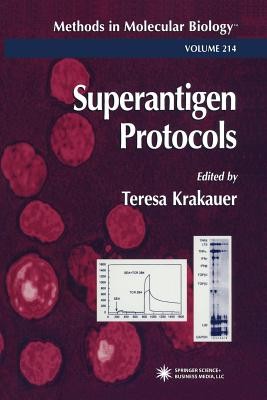
- We will send in 10–14 business days.
- Publisher: Humana
- Year: 2013
- Pages: 259
- ISBN-10: 1489938230
- ISBN-13: 9781489938237
- Format: 15.2 x 22.9 x 1.5 cm, softcover
- Language: English
- SAVE -10% with code: EXTRA
Superantigen Protocols (e-book) (used book) | bookbook.eu
Reviews
Description
Superantigen Protocols assembles experimental protocols that have proved useful for the study of superantigens. These techniques will allow researchers from various areas of cell biology, microbiology, immunology, biochemistry, and molecular biology to assess the physical characteristics and biological effects of well-known superantigens as well as of putative substances that might have superantigenic activities, and to explore therapies for superantig- induced effects. Microbial exotoxins have been studied for decades as virulence factors because of their pathogenic effects. The term "superantigen" was coined by Marrack and Kappler a decade ago for some of these molecules because of their potent T-cell stimulatory activities. In recent years, advances in mole- lar biology provide recombinant as well as natural superantigens in highly purified form for physical characterization. Superantigens are now used extensively as tools to study interactions between receptors on cells of the immune system as they bind to major histocompatibility complex class II m- ecules on antigen-presenting cells and V regions of T-cell receptors. The b- ? logical effects that result from these interactions are studied both in vitro and in vivo. The intent of this book is, therefore, to bring together up-to-date te- niques developed by experts in the field of biochemistry, immunology, and molecular biology for the study of superantigens. Superantigen Protocols begins with an overview of the field to provide background information on the various classes of superantigens and their str- ture.
EXTRA 10 % discount with code: EXTRA
The promotion ends in 15d.17:56:15
The discount code is valid when purchasing from 10 €. Discounts do not stack.
- Publisher: Humana
- Year: 2013
- Pages: 259
- ISBN-10: 1489938230
- ISBN-13: 9781489938237
- Format: 15.2 x 22.9 x 1.5 cm, softcover
- Language: English English
Superantigen Protocols assembles experimental protocols that have proved useful for the study of superantigens. These techniques will allow researchers from various areas of cell biology, microbiology, immunology, biochemistry, and molecular biology to assess the physical characteristics and biological effects of well-known superantigens as well as of putative substances that might have superantigenic activities, and to explore therapies for superantig- induced effects. Microbial exotoxins have been studied for decades as virulence factors because of their pathogenic effects. The term "superantigen" was coined by Marrack and Kappler a decade ago for some of these molecules because of their potent T-cell stimulatory activities. In recent years, advances in mole- lar biology provide recombinant as well as natural superantigens in highly purified form for physical characterization. Superantigens are now used extensively as tools to study interactions between receptors on cells of the immune system as they bind to major histocompatibility complex class II m- ecules on antigen-presenting cells and V regions of T-cell receptors. The b- ? logical effects that result from these interactions are studied both in vitro and in vivo. The intent of this book is, therefore, to bring together up-to-date te- niques developed by experts in the field of biochemistry, immunology, and molecular biology for the study of superantigens. Superantigen Protocols begins with an overview of the field to provide background information on the various classes of superantigens and their str- ture.


Reviews